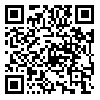Mon, Nov 17, 2025
[Archive]
Volume 10, Issue 3 (9-2018)
itrc 2018, 10(3): 19-30 |
Back to browse issues page
Download citation:
BibTeX | RIS | EndNote | Medlars | ProCite | Reference Manager | RefWorks
Send citation to:



BibTeX | RIS | EndNote | Medlars | ProCite | Reference Manager | RefWorks
Send citation to:
Nobahary S, Gharaee Garakani H, Khademzadeh A, Rahmani A M. ISOT: Distributed Selfish Node Detection in Internet of Things. itrc 2018; 10 (3) :19-30
URL: http://ijict.itrc.ac.ir/article-1-393-en.html
URL: http://ijict.itrc.ac.ir/article-1-393-en.html
1- Department Computer Engineering Science and Research Branch, Islamic Azad University Tehran, Iran
2- ICT Research Institute ITRC Tehran, Iran ,gharaee@itrc.ac.ir
3- ICT Research Institute ITRC Tehran, Iran
4- Department of Computer Engineering Science and Research Branch, Islamic Azad University Tehran, Iran
2- ICT Research Institute ITRC Tehran, Iran ,
3- ICT Research Institute ITRC Tehran, Iran
4- Department of Computer Engineering Science and Research Branch, Islamic Azad University Tehran, Iran
Abstract: (3593 Views)
Internet of Things (IOT) has prepared for a range of small sensors to popular laptops. Wireless communication in IOT systems assumes the nodes as a terminal as well as a router which can transmit the data packets. However, individual nodes may refuse to cooperate with others sometimes, leading to a selfish node behavior. The existence of selfish nodes degrades the network performance. This paper proposes to detect selfish nodes in IOT (DISOT) in three phases: Setup and Clustering phase which identifies and then clusters all the nodes in the network. The global phase which indicates whether a selfish node(s) exists in the clusters or not using the main cluster head and the cluster heads in each cluster must identify the selfish node(s) within the local phase. The proposed scheme is simulated by 2500 IOT nodes in the network and the results show that DISOT reduces end-to-end delay up to 41% and when the percentage of selfish nodes in the network does not exceed 35%, DISOT increases detection accuracy up to 10% and false positive rate decreases down to 5%.
Send email to the article author
| Rights and permissions | |
 | This work is licensed under a Creative Commons Attribution-NonCommercial 4.0 International License. |




